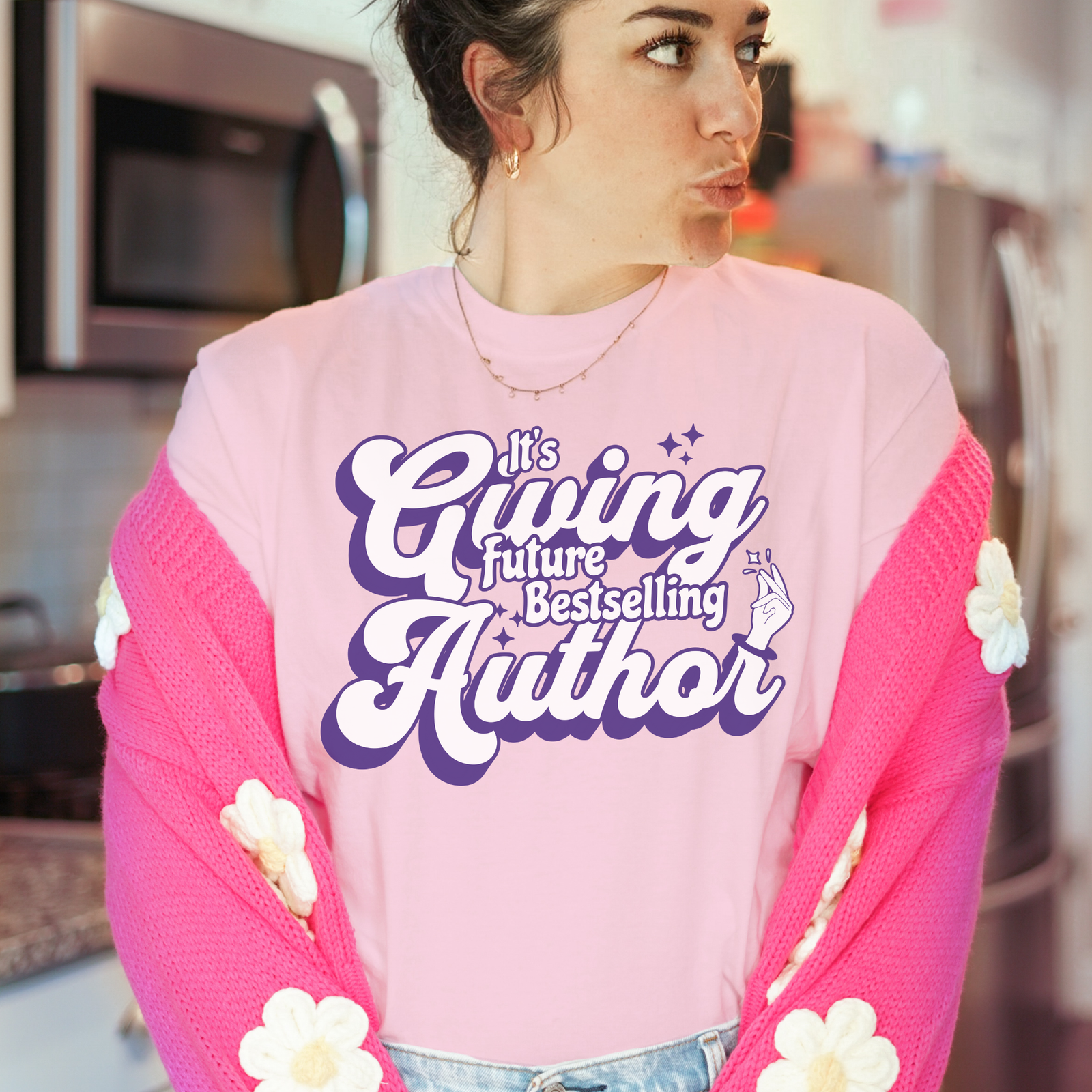Figuring out how to get your poetry published can feel confusing and complicated. You’ve poured your heart into your poems, maybe even typed out a full manuscript or chapbook, and now you’re staring at a confusing mix of submission guidelines, publishing platforms, ISBNs, and advice that feels either too vague or way too technical. Publishing a book doesn’t have to be that complicated.
This guide is your straight-up, no-fluff roadmap for publishing your poetry. You’ve been dreaming of holding a printed book in your hands and soon, after this step by step guide, you’ll become a published poet. You’ll walk away with:
- A clear, step-by-step plan
- Real talk on how to self-publish poetry the right way
- Practical poetry publishing tips that actually help
Let’s make your work real, and get it into the hands of readers who’ll love it.
1. Is Your Poetry Ready for Publishing?
Before you even think about uploading your manuscript anywhere, hit pause and ask yourself this: Is your poetry ready to be published? Not just emotionally, but structurally and stylistically?
Polish the Work, Ruthlessly
The editing stage is a very important step in publishing. Editing is more than just reading over your work. It means more than just checking for typos. Are your themes consistent? Do the poems feel cohesive together? If it’s a chapbook or full-length collection, does it read like a complete body of work?
Here’s how to tighten it up:
- Rearrange the order of poems for better flow
- Cut weak or repetitive pieces, even if you’re attached to them
- Fine-tune titles, line breaks, and punctuation
Get Feedback
Don’t skip this. I usually advise hiring a professional editor. You can hire great freelance editors on Fiverr or Upwork and make your selection based on your budget. It is an investment that is worth it, but if you are on a really low budget, there are other options. You can share your manuscript with a trusted critique group, or even just one or two poetry-loving friends who can highlight things you never noticed. Fresh eyes matter.
Look for:
- Feedback on the emotional impact of your work
- Notes on clarity, cohesion, and standout poems
- Suggestions on what feels “unfinished” or out of place
What Makes a Collection “Complete”?
There’s no magic number of poems, but a solid chapbook usually runs 20–30 pages. A full-length collection? Closer to 60-100. Could be more. But more importantly, it should feel like a full experience. The kind where a reader finishes and feels like they’ve walked through something meaningful.
If it’s not there yet, don’t rush it. The best move for publishing your poetry is to take the time now to get it right.
2. How to Self-Publish Poetry (and Actually Do It Right)
Okay, let’s talk options. You’ve got two main routes: traditional publishing and self-publishing. Spoiler alert: self-publishing is not a backup plan. It’s a legit, empowering path if you do it right.
Self-Publishing vs. Traditional
Traditional publishing means submitting your manuscript to publishers or presses, often waiting months for a response, and giving up some creative control. If your manuscript is accepted by a traditional publisher, you may be paid a lump sum offered as an advance against future royalties.
Self-publishing, on the other hand, lets you move at your own pace, keep full control over your work, and get it out into the world faster. You handle everything, or hire help, and your book goes live when you say so.
Many poets today self-publish their work. And you figure out how to self-publish poetry, you will have full control over your timeline, design, pricing, and creative vision, without waiting for a publisher’s approval.
Recommended Self-Publishing Platforms
Here are a few tried-and-true platforms to check out:
- Amazon KDP (Kindle Direct Publishing): Free to use, wide reach, print-on-demand. Great for paperbacks and Kindle editions.
- IngramSpark: Better distribution to indie bookstores and libraries. Though Ingramspark used to require set up fees, as at the time of this post, it now offers a free plan.
- Draft2Digital: A great all-in-one option for self-publishing both ebooks and print books, with wide distribution and user-friendly tools.
I’ve got the full list of self-publishing platforms in my post: 10 Best Self-Publishing Sites.
If you want simplicity and the biggest audience, Amazon KDP could be a starting point for you. If you want a platform with wide distribution and no complicated stuff, Draft2digital is a great option. I have personally used them.
Formatting, ISBNs, and Design
Here’s what you’ll need to handle:
- Formatting: Your poetry layout matters. Use tools like Microsoft Word, Adobe InDesign, or Reedsy’s free editor. Keep spacing and line breaks intentional.
- ISBNs: Amazon will give you a free one, but if you want to publish under your own imprint, buy your own from Bowker (US) or your country’s ISBN agency.
- Cover design: This matters more than you think. It is best to hire a designer. There are affordable poetry book cover designers on Fiverr. However, if you have some knowledge in graphic design, we can design it yourself with Canva templates or use a design software like Adobe illustrator. Your book cover is your first impression, and it is what will catch the reader’s attention.
Learning how to self-publish poetry means getting familiar with the technical and creative tasks involved, like formatting, cover design, uploading files, and understanding ISBNs. It can seem like a lot at first, but once you’ve done it once, it’s all repeatable.
Need help with formatting? I’ve put together a free bundle with ready-to-use Microsoft Word templates in multiple book sizes, plus a step-by-step eBook that walks you through formatting your poetry manuscript
3. The Exact Steps to Publish a Poetry Book
Now let’s break it down step by step, no jargon, no overwhelm.
Step 1: Finalize Your Manuscript
Make sure your poems are ordered, edited, and proofread. This is your final draft: clean, cohesive, and ready for print. If formatting in Microsoft Word feels too technical, try Reedsy’s free editor.
Step 2: Choose Your Publishing Route
Ask yourself:
- Do I want full control and faster results? → Self-publish.
- Am I willing to wait and submit to publishers and presses? → Traditional route.
Step 3: Prepare Your Files
You’ll need:
- A formatted interior file (usually PDF for print, ePub for eBooks)
- A high-resolution cover file (front, spine, back for print) – usually exported as a separate PDF for uploading
Most platforms have their requirements and their templates. If you’re unsure, check their specs or hire a freelancer.
Step 4: Upload Everything
Sign into your publishing platform (like KDP), fill in the book details (title, author name, description, keywords), and upload your files.
Step 5: Order a Proof, Then Publish
Always order a physical proof before going live. Check for layout errors, margins, font size, and paper quality.
Once it looks great, hit publish. Congrats, you’ve just completed all the steps to publish a poetry book.
4. Poetry Publishing Tips No One Tells You
Here’s where we get into the nitty-gritty stuff: the kind of poetry publishing tips that can save you time, money, and frustration.
Skip the Vanity Presses
If a “publisher” asks for money up front to print your book, it’s not a real publishing deal. These companies prey on poets’ dreams and overcharge for services you could do yourself or hire for cheaper.
Stick to:
- Reputable presses
- DIY self-publishing platforms
- Hybrid publishers only after doing serious research
Price Your Book Smart
Don’t undercharge just because it’s poetry. Look at other books in your genre and price range. Most paperbacks fall between $8.99 and $14.99.
Keep in mind:
- Printing costs (especially if your book has illustrations or color)
- Royalty percentages from each platform
- Your own goals: profit vs. exposure
Nail Your Book Description
This is your sales pitch. Think about:
- What your collection is about (theme, tone, journey)
- What kind of reader it’s for
- A few standout lines or imagery to pull readers in
Read other poetry books’ blurbs to see what works. A good description can make or break your listing.
Build an Audience Before Launch
You don’t need a huge following, but some buzz goes a long way. Try:
- Sharing snippets on Instagram or TikTok
- Starting an email list
- Posting behind-the-scenes of your publishing process
Even a small, engaged audience can turn your first poetry book launch into a real moment.
You’ve Got This
Publishing your poetry is possible, even without a publishing deal or a big name.
It’s about being intentional. Polishing your work. Learning the tools. And taking one step at a time.
Start small if you have to: self-publish a mini chapbook, post one poem online, or submit to a literary magazine. Whatever your first move is, it counts. Each step builds confidence, experience, and a portfolio of work you can be proud of.
You’ve already done the hard part: you wrote the poems.
Now go publish them.

















